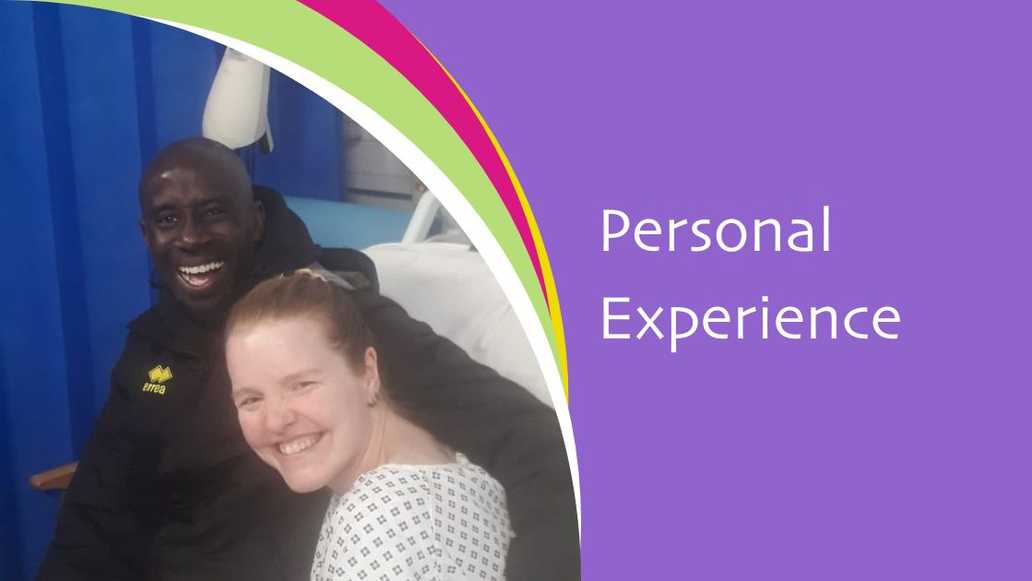
In early January, my boyfriend and I were shocked but excited to learn that we were pregnant. For the first few months, all I really experienced was tiredness and cramping. Some days, it felt like I wasn’t even pregnant – I would take pregnancy tests every few days just to see those two lines and know everything was okay.
We went along to our 12-week scan, excited, until the sonographer performing the scan thought our baby was outside the womb, growing in the abdomen.
When a second, more senior member of staff came to have a look, she explained that I have a bicornuate uterus – where the uterus is heart-shaped rather than round, and tissue at the top can separate the two sides. They performed an internal vaginal scan for a more detailed look and confirmed the diagnosis.
We were told the most important thing was that the baby was okay and that it is possible to carry a pregnancy with a bicornuate uterus. At my blood test after the scan, I mentioned the diagnosis to the midwife, and we were told that the only concern would be premature birth or low birth weight.
However, because the condition was something that neither of us had ever heard of, and we weren’t given much information about it, we found ourselves looking online for answers on the way home from the scan. We learned that our pregnancy was now considered high risk and about the difficulties we might face.
Despite our midwife telling us not to be too concerned, they booked an appointment for a few weeks later to discuss how my pregnancy might be affected and what to expect.
A few days before the appointment, when I was almost 16 weeks pregnant, I began feeling severe pain in my lower abdomen, making me feel light-headed and nauseous. The pain became unbearable, and I started vomiting, so we thought it would be best to head to the hospital. As we arrived, I collapsed in the car park. Too weak to stand, I was helped into a wheelchair.
My blood pressure was dangerously low, and an ultrasound showed internal bleeding. Doctors and nurses inserted numerous drips, gave me blood transfusions, and put me on oxygen before taking me in for lifesaving exploratory surgery.
They discovered that our baby had outgrown the right horn of my uterus, causing it to rupture. Sadly, our baby didn’t survive, and I almost didn’t either.
Some time later, I woke up in the intensive care unit (ICU) to discover I was no longer pregnant, which was devastating. I stayed in ICU for a week, with many more weeks of recovery – mentally and physically – to follow. It’s been a difficult journey, with both emotional and physical pain coming in waves. One minute, I feel okay; the next, I am sore or reliving the trauma of what happened.
Our hospital holds a ceremony at the local crematorium on the last Tuesday of each month for babies who have not survived. The one for our baby took place on 23 April, St George’s Day, which is also my late grandfather’s birthday, so it felt right to take part.
It was a beautiful, poignant ceremony. The hospital chaplain read poems, and we were given a moment of silent prayer or contemplation as the curtains slowly closed to an instrumental version of Over the Rainbow.
Outside the chapel, a small area was dedicated to the babies included in the ceremony, where flowers could be laid. My partner and I had brought some flowers, one of which we were allowed to have cremated with our baby.
Despite losing his child and nearly his partner too, there was very little support for my partner. The only time he was included was when the counselling psychologist within the hospital visited me on three occasions during my stay in ICU.
As with all pregnancies, but especially those that are high risk, you should trust your instincts and have any pain investigated as soon as it arises. Had we ignored the pains (although they were developing so rapidly that it would’ve been impossible), I would not be here telling my story.
You cannot be too careful or inquisitive when it comes to your pregnancy – especially if, like us, this was to be your first baby.
Thankfully, they were able to save my womb and stitch it up, but there’s a risk of this happening again in the future. While it’s not impossible for those with a bicornuate uterus to have a healthy and successful pregnancy, we’ve been told that any pregnancy implanting within the right side of my womb wouldn’t survive.
If we were lucky enough to fall pregnant and the baby implanted in the left, then we’d need very close monitoring and scans as early as six weeks. My case is considered so rare that some of the doctors at the hospital had never come across such a condition before.
Although my partner and I cannot try to fall pregnant again for at least a year, we still have a chance and are holding onto that hope. However, should we be lucky enough to conceive again, I know the anxiety and fear of history repeating itself will overpower the excitement of having our much-wanted, much-loved little miracle.
If I could say one thing....
It is a truly heartbreaking and traumatic experience, but you cannot blame yourself or your body, it is not your fault.
Thank you to Lynda for sharing her experience. If you would like to share your experience of ectopic pregnancy, please visit our guide for more information.
Please remember our support services are available at any time.